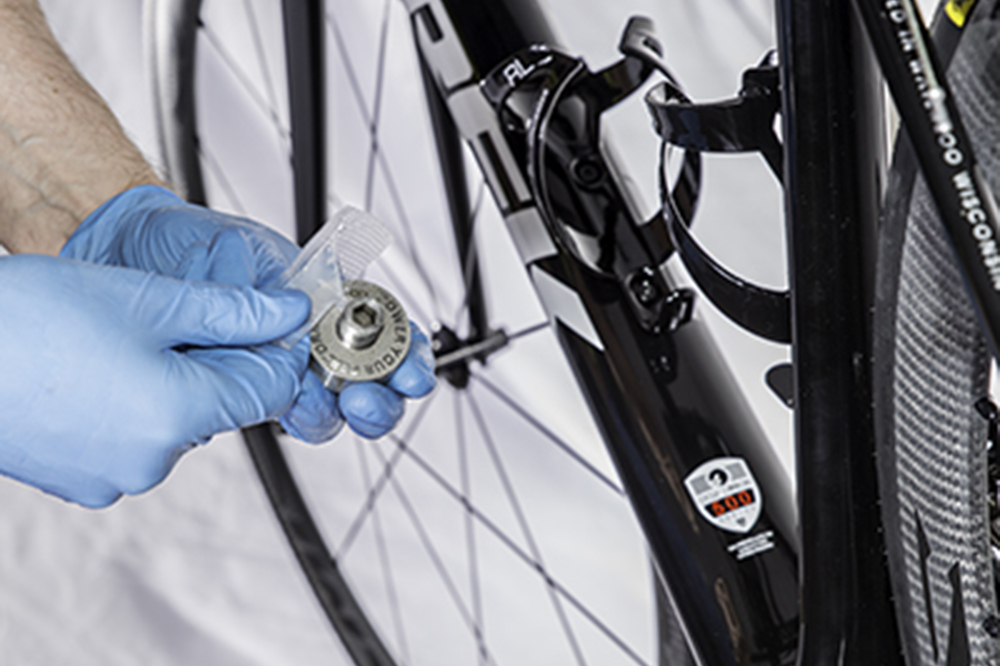British inventor creates revolutionary affordable power meter
Limits system, which will launch this week on Indiegogo, calculates power output from a device mounted between the pedal and crank arm

The Limits system measures power output from the pedal spindle
The world of power meters will be shaken up this week when an inventor seeks crowdfunding for a novel system called Limits, which promises breakthroughs in price, simplicity and technology.
Inventor Ken Norton, technologist and keen cyclist, says the first models will cost just £260 (US$385), which would make this one of the cheapest power meters available.
The meter is unusual in calculating the rider's power at the pedal spindle. The small cylinder fits between the crank and the pedal; it screws into the crank and has a threaded hole to accept the spindle.
>>> Garmin Vector power meters unveiled
Limits can be swapped from bike to bike with a 2mm Allen key and will fit all standard 9/16th x 20tpi threaded pedals. Norton says it weighs 47g, is accurate to ±2 per cent and the cro-moly housing is waterproof to a depth of 1.3m.

Like most power meters, it's a strain gauge. In fact, the Limits cylinder contains four strain gauges which measure the electrical resistance in the spindle as it changes in response to the force applied by the rider.
The rider's force multiplied by the length of the crank is a measure of the torque. The device can be programmed wirelessly for cranks from 165-180mm in length in 2.5mm increments.
>>> Powertap unveils pedal and chainring-based power meters
The Limits cylinder also contains an inclinometer, a sensor that detects the angle of the crank. This means it can calculate cadence without needing any other components.
The unit multiplies the torque data by the cadence to produce the rider's power output data. The data is transmitted to a bike computer using the ANT+ wireless protocol or to a smartphone via Bluetooth.
Data is stored in the Limits unit so performance isn't disrupted if there's a break in the wireless connection, and its replaceable coin cell battery is said to last for one year.
>>> Power meters: everything you need to know
The first production model will fit only the left pedal, and the total power output into both pedals will be extrapolated from that. Future versions will independently measure power from each leg and report total power as well as the balance between right and left leg, says Norton.
He came up with the new solution when working out how to make an e-bike motor's output change according to the rider's pedal power. Then he realised it could be used for human-powered bikes too.
Now he's going to fund production by crowdsourcing support, with a campaign going live on Indiegogo here on Monday April 20. The company is also running a half-price campaign via its website for people who sign up by April 19.

Thank you for reading 20 articles this month* Join now for unlimited access
Enjoy your first month for just £1 / $1 / €1
*Read 5 free articles per month without a subscription

Join now for unlimited access
Try first month for just £1 / $1 / €1
Get The Leadout Newsletter
The latest race content, interviews, features, reviews and expert buying guides, direct to your inbox!
-
 Gear up for your best summer of riding – Balfe's Bikes has up to 54% off Bontrager shoes, helmets, lights and much more
Gear up for your best summer of riding – Balfe's Bikes has up to 54% off Bontrager shoes, helmets, lights and much moreSupported It's not just Bontrager, Balfe's has a huge selection of discounted kit from the best cycling brands including Trek, Specialized, Giant and Castelli all with big reductions
By Paul Brett
-
 7-Eleven returns to the peloton for one day only at Liège-Bastogne-Liège
7-Eleven returns to the peloton for one day only at Liège-Bastogne-LiègeUno-X Mobility to rebrand as 7-Eleven for Sunday's Monument to pay tribute to iconic American team from the 1980s
By Tom Thewlis